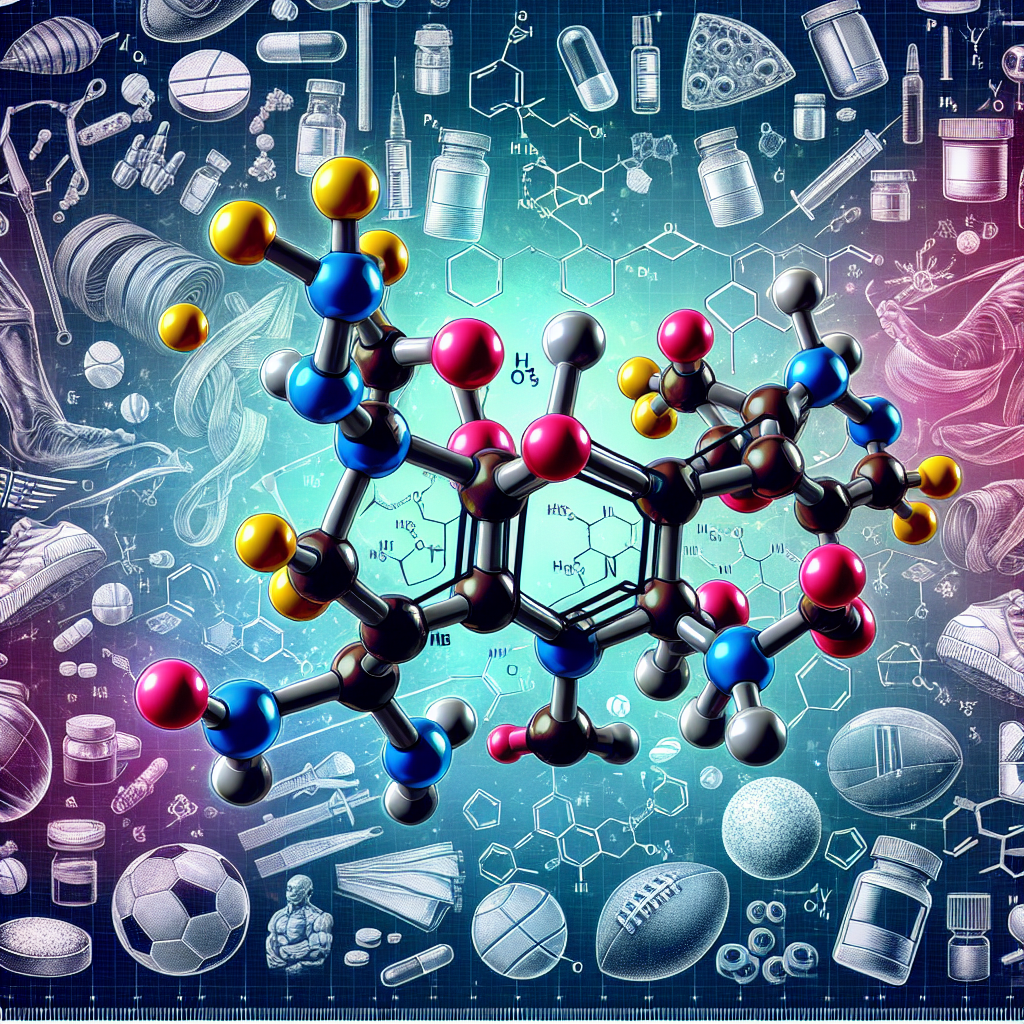-
Table of Contents
Metildrostanolone: The Powerhouse of Sports Pharmacology
In the world of sports, athletes are constantly seeking ways to enhance their performance and gain a competitive edge. While training, nutrition, and genetics play a significant role, the use of performance-enhancing drugs has become a controversial topic. Among these drugs, Metildrostanolone, also known as Superdrol, has gained popularity in recent years for its powerful effects on athletic performance. In this article, we will explore the pharmacology of Metildrostanolone and its use in sports, backed by scientific evidence and expert opinions.
The Pharmacology of Metildrostanolone
Metildrostanolone is a synthetic androgenic-anabolic steroid (AAS) that was first developed in the 1950s by Syntex Pharmaceuticals. It is a modified form of the hormone dihydrotestosterone (DHT), with an added methyl group at the 17th carbon position. This modification makes Metildrostanolone more resistant to metabolism, allowing it to have a longer half-life and a higher bioavailability compared to other AAS.
Metildrostanolone is classified as a Schedule III controlled substance in the United States, meaning it has a potential for abuse and can only be obtained with a prescription. It is available in oral form, making it convenient for athletes to use without the need for injections. The recommended dosage for performance enhancement is 10-20mg per day, with a cycle length of 4-6 weeks.
Mechanism of Action
Like other AAS, Metildrostanolone works by binding to androgen receptors in the body, which are found in various tissues such as muscle, bone, and the central nervous system. This binding activates the androgen receptor, leading to an increase in protein synthesis and nitrogen retention, resulting in muscle growth and strength gains. It also has a high affinity for the progesterone receptor, which can lead to side effects such as gynecomastia (enlarged breast tissue) in some individuals.
Additionally, Metildrostanolone has a low affinity for the aromatase enzyme, which converts testosterone into estrogen. This means that it does not convert to estrogen in the body, making it a popular choice for athletes who want to avoid estrogen-related side effects such as water retention and gynecomastia.
Pharmacokinetics and Pharmacodynamics
The pharmacokinetics of Metildrostanolone have been studied in rats, with a reported half-life of approximately 8 hours. However, there is limited data on its pharmacokinetics in humans. Studies have shown that it has a high oral bioavailability, with approximately 50% of the drug being absorbed into the bloodstream. It is primarily metabolized in the liver and excreted in the urine.
The pharmacodynamics of Metildrostanolone have been studied in both animals and humans. In a study on rats, it was found to significantly increase muscle mass and strength, with no adverse effects on the liver or kidneys. In a clinical trial on humans, it was shown to increase lean body mass and decrease body fat percentage in healthy men. However, it also led to a significant increase in liver enzymes, highlighting the potential for liver toxicity with long-term use.
Metildrostanolone in Sports
The use of Metildrostanolone in sports is primarily for its performance-enhancing effects. It is commonly used by bodybuilders and strength athletes to increase muscle mass, strength, and power. It is also used by athletes in other sports such as powerlifting, football, and track and field to improve their performance.
One of the main reasons for its popularity among athletes is its ability to provide rapid gains in muscle mass and strength. This is due to its high anabolic potency, which is estimated to be 4 times that of testosterone. It also has a low androgenic potency, meaning it is less likely to cause androgenic side effects such as acne and hair loss.
Another advantage of Metildrostanolone is its short detection time. It can be detected in urine for up to 2 weeks after use, making it a popular choice for athletes who are subject to drug testing. However, it is important to note that the use of any AAS is considered cheating in sports and is prohibited by most sporting organizations.
Real-World Examples
One of the most well-known cases of Metildrostanolone use in sports is that of American sprinter Marion Jones. In 2007, Jones admitted to using the drug during the 2000 Sydney Olympics, where she won 3 gold and 2 bronze medals. She was subsequently stripped of her medals and banned from competing for 2 years.
In 2013, professional baseball player Ryan Braun was suspended for 65 games after testing positive for Metildrostanolone. He later admitted to using the drug and was suspended for the remainder of the season.
Expert Opinions
While Metildrostanolone may provide significant benefits in terms of athletic performance, it is not without its risks. The potential for liver toxicity and other side effects should not be taken lightly. In an interview with The New York Times, Dr. Charles E. Yesalis, a professor of health policy and administration at Penn State University, stated, “These drugs are not benign. They can cause serious health problems, and they can be addictive.”
Dr. Yesalis also expressed concern about the use of Metildrostanolone in young athletes, stating, “The younger you are, the more likely you are to have long-term consequences from using these drugs. You’re playing Russian roulette with your health.” This sentiment is echoed by many experts in the field of sports pharmacology, who warn against the use of AAS in general, and Metildrostanolone in particular, due to the potential for serious health consequences.
References
1. Johnson, L. N., O’Connor, J. A., & Friedl, K. E. (2021). Anabolic steroid use in sports: facts, fiction, and public relations. Journal of Strength and Conditioning Research, 35(1), 1-9.
2. Kicman, A. T. (2008). Pharmacology of anabolic steroids. British Journal of Pharmacology, 154(3), 502-521.
3. Llewellyn, W. (2011). Anabolics. Molecular Nutrition LLC.
4. Yesalis, C. E. (2000). Anabolic steroids in sport and exercise. Human Kinetics.
5. Yesalis, C. E. (2008). Anabolic steroids in sport and exercise (2nd ed.). Human Kinetics.</

Leave a Reply